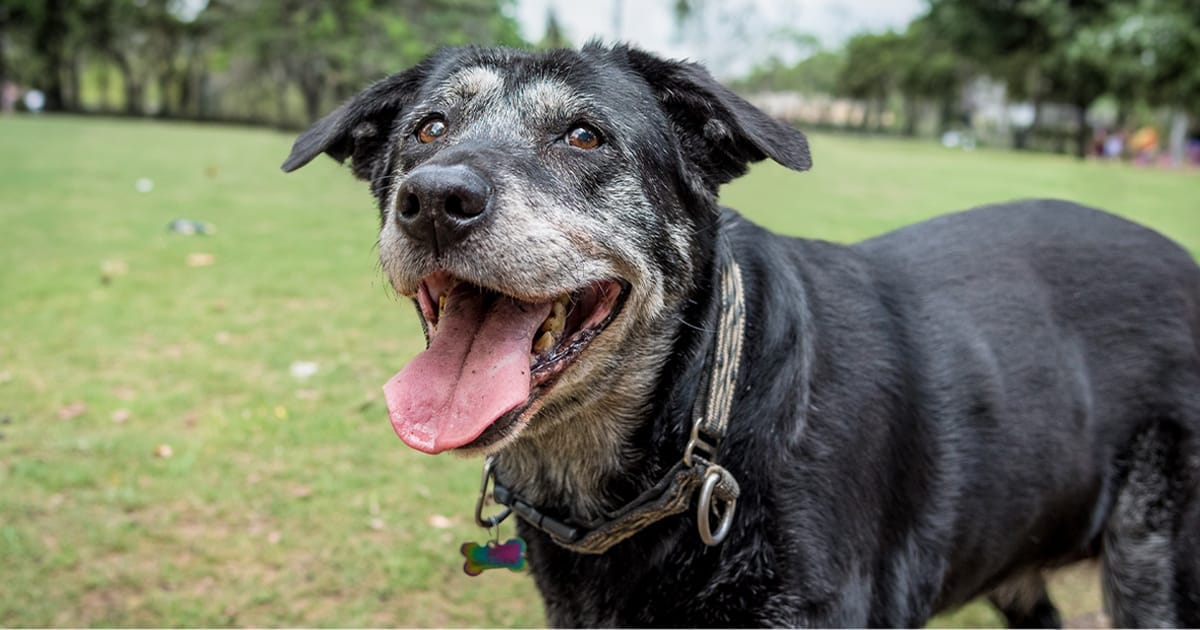
Arthritis in Cats and Dogs: Understanding and Managing the Condition
Aging pets may develop osteoarthritis, leading to pain and less mobility. Recognize signs and explore treatments.
Osteoarthritis (OA) is a common health issue affecting pets, particularly cats and dogs. It is a chronic degenerative joint disease that causes pain, stiffness, and reduced mobility. As pets age, the risk of developing arthritis increases, making it essential for pet owners to understand the condition, its signs, diagnosis, and treatment options.
What is Arthritis in Pets?
Osteoarthritis is a common condition in pets characterized by the inflammation and degeneration of joints over time. This wear and tear causes the cartilage that cushions the bones to break down, leading to OA. In contrast, other forms of arthritis may result from infections, such as Lyme arthritis, or immune-related issues, like polyarthritis.
Osteoarthritis occurs most often in older pets, although any pet can develop it. It’s believed that around 40% of dogs and up to 90% of cats over age 12 show signs of arthritis.
Arthritis can affect any joint in the body, but it most commonly affects the limbs and lower spine, such as the hips, knees, elbows, and shoulders.
Risk Factors for Arthritis in Pets
Several factors increase the risk of developing arthritis in pets. These include:
- Genetics: Some breeds are genetically predisposed to developing arthritis. For cats, Maine Coons and Burmese breeds may be more likely to develop it. Due to their size and weight, larger dog breeds such as German Shepherds, Great Danes, Labradors, Retrievers, St. Bernards, and Mastiffs may also have an increased risk.
- Age: Older pets are more likely to develop arthritis due to natural wear and tear on their joints.
- Obesity: Excess weight puts additional stress on joints, increasing the risk of arthritis.
- Previous injuries, surgeries or congenital conditions: Pets that have experienced joint injuries or undergone surgeries are at a higher risk of developing osteoarthritis. Certain conditions also increase this risk, including cranial cruciate ligament (CCL) rupture, which is a tear in the ligament that stabilizes the knee, patellar luxation, where the kneecap moves out of place, hip and elbow dysplasia, and Osteochondritis Dissecans (OCD), a condition characterized by improper cartilage development.

Signs of Arthritis in Cats and Dogs
The signs of arthritis in cats and dogs can vary, but common signs include:
- Limping or stiffness: Pets may limp or show stiffness, especially after rest or exercise.
- Difficulty climbing stairs or jumping: Arthritis can make it challenging for pets to climb stairs or jump onto furniture.
- Reluctance to exercise or play: Pets with arthritis may show a decrease in activity level or enthusiasm for play.
- Changes in behavior: Pets may become more aggressive, irritable, or withdrawn due to pain and discomfort.
In cats, signs of arthritis are often very subtle and can include:
- Hiding or avoiding interaction: Cats with arthritis may hide or avoid interaction due to pain and discomfort.
- Changes in grooming habits: Cats may show a decrease in grooming or have a matted coat.
- Difficulty using the litter box: Arthritis can make it challenging for cats to use the litter box.
- Slowing down: Aging cats naturally experience a decrease in energy levels and slower body movements, but this can also be exacerbated or a sign of arthritis.
Diagnosing Arthritis in Pets
Diagnosing arthritis in pets typically involves a combination of physical examination, medical history, and diagnostic tests. Veterinarians may use:
- Physical examination: A thorough examination to assess joint mobility and pain.
- Radiographs (X-rays): To evaluate joint damage and rule out other conditions.
- Force Plate Analysis: Force Plate Analysis is a diagnostic tool that measures the ground reaction forces exerted by a dog’s limbs as it walks or trots across a specialized plate. This test provides valuable insights into the dog’s gait and limb usage, helping to identify any abnormalities or issues that may occur.
Treatment Options for Arthritis in Pets
While there is no cure for arthritis, various treatment options can help manage the condition and improve your pet’s quality of life. These include:
- Weight management: Maintaining a healthy weight reduces stress on joints.
- Regular, controlled exercise: Gentle exercise, such as swimming or short walks, can help maintain joint mobility.
- Rehabilitation: Rehabilitation is more than just post-surgery recovery—it’s a valuable tool for pets with arthritis too. By improving comfort, joint mobility, strength, and endurance, rehabilitation can help your pet enjoy a more active life. Treatments may include therapeutic ultrasound, electrical stimulation, customized exercises, or hydrotherapy using underwater treadmills.
- Alternative therapies: Integrative medicine options like acupuncture, massage, and cold or low-level laser can provide additional pain relief.
- Surgery: In severe cases, your veterinarian can use surgical approaches to remove damaged tissue or even replace joints.

Modern Treatments for Pet Arthritis
There’s no cure for osteoarthritis, but a multimodal approach can significantly improve quality of life. The goal is to manage pain, slow disease progression, and improve mobility.
Pain Medications
- NSAIDs: These are the most prescribed medications to reduce a pet’s inflammation and pain (e.g., carprofen, meloxicam)
- Grapiprant (Galliprant): A relatively new nonsteroidal anti-inflammatory drug (NAISD) newer NSAID designed to more selectively inhibit the specific pathways involved in pain, potentially reducing the risk of gastrointestinal side effects commonly associated with traditional NSAIDs.
- Gabapentin, amantadine: Used off-label to manage chronic pain and nerve sensitivity
Biologic Therapies: Monoclonal Antibodies
- Librela (bedinvetmab): A monthly injection for dogs that targets nerve growth factor (NGF) to block pain signals
- Solensia (frunevetmab): A similar NGF-inhibiting biologic approved for cats
Pets undergoing treatment for osteoarthritis often receive multiple medications for various health conditions. Therefore, it is imperative that you collaborate closely with your veterinarian to monitor your pet for any potential side effects or drug interactions. This is particularly important for biologic therapies, which are relatively new and have been associated with neurologic side effects such as tremors and ataxia in some pets, necessitating careful observation.
Joint Supplements and Diet
- Omega-3 fatty acids: EPA and DHA have proven anti-inflammatory effects
- Glucosamine, chondroitin, and MSM: Glucosamine and chondroitin are the most widely used joint supplements, but evidence of their efficacy is poor. Undenatured type II collagen is a newer collagen supplement that is showing some more promising results for patient improvement.
- Prescription diets for joint support: (e.g., Hill’s J/D, Royal Canin Mobility) often include added EPA, antioxidants, and glucosamine
Disease-Modifying Injectables
- Adequan (polysulfated glycosaminoglycan): Injected into muscle, may protect cartilage and improve joint lubrication. Widely used in dogs; off-label in cats.
- Synovetin OA: A single, targeted, non-systemic treatment that reduces inflammation and pain in dogs. This is an injection that has been FDA-approved for elbow arthritis in dogs.
Helping Your Pet with Arthritis at Home
Making a few simple changes around the house can greatly improve your pet’s comfort and quality of life when they have arthritis.
Create a Comfortable Environment
- Add area rugs with non-skid backing to provide traction on hardwood, tile, and laminate floors.
- Use baby gates to restrict access to slippery areas.
- Keep your pet’s nails short to prevent slipping.
Manage Temperature and Humidity
- Maintain a stable temperature and humidity level, as cold temperatures can exacerbate arthritis pain.
- Keep your pet warm and dry to alleviate discomfort.
- Consider keeping them indoors where it’s warmer and more comfortable.
Ease Daily Activities
- Use raised food and water dishes to reduce strain while eating and drinking.
- Provide regular exercise to improve strength and help with weight management.
- Offer comfortable, supportive bedding, such as orthopedic or memory foam beds.
Modify Exercise and Outings
- Take your pet on walks on softer surfaces like grass or dirt to reduce joint stress.
- Consider using ramps to help your pet navigate stairs, get into cars, or onto furniture.

For more information on specific exercises and weight management in senior dogs, read our blog post.
While osteoarthritis isn’t curable, it’s a manageable condition with the right care. Early detection and intervention can significantly reduce your pet’s pain and improve their quality of life. If you’re concerned about arthritis in your pet, start by consulting your family veterinarian. They can assess your pet’s condition and refer you to a specialist, such as those at MedVet, who offer comprehensive services including integrative medicine, surgery, and rehabilitation.
Visit our Pet Care Resources library for more pet health and safety information.
FAQs
What is arthritis in pets?
What are the signs of arthritis in pets?
Is there a cure for arthritis in pets?
Learn More
For ways to ensure your pet lives a happier, healthier life, visit our Pet Care Resources library.
Pet Care ResourcesContents
Learn More
For ways to ensure your pet lives a happier, healthier life, visit our Pet Care Resources library.
Pet Care Resources


